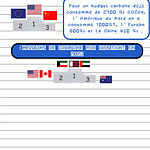The linear economy is the traditional economic model most of us are familiar with. Imagine a straight line: that's where the term "linear" comes from. It follows a take-make-waste pattern:
Resource extraction: Raw materials are pulled from the earth to make a product. Think trees for paper or metals for electronics.
Production: These raw materials are manufactured into all sorts of goods we use every day.
Consumption and disposal: We buy and use these products, and then eventually throw them away when they're broken, worn out, or outdated.
There's not much thought given in this model to what happens after we discard things. This linear process has some major drawbacks:
Depletes resources: Our planet has a finite amount of resources, and the linear economy uses them up quickly.
Creates waste: Throwing things away generates a lot of landfill waste and pollution.
Doesn't consider the environment: The linear economy doesn't take into account the environmental impact of extracting resources, manufacturing products, and disposing of waste.
As the world becomes more concerned about sustainability, the linear economy is being increasingly criticized. The circular economy, which focuses on keeping materials in use for as long as possible, is seen as a more sustainable alternative.













Share this post